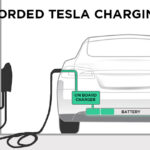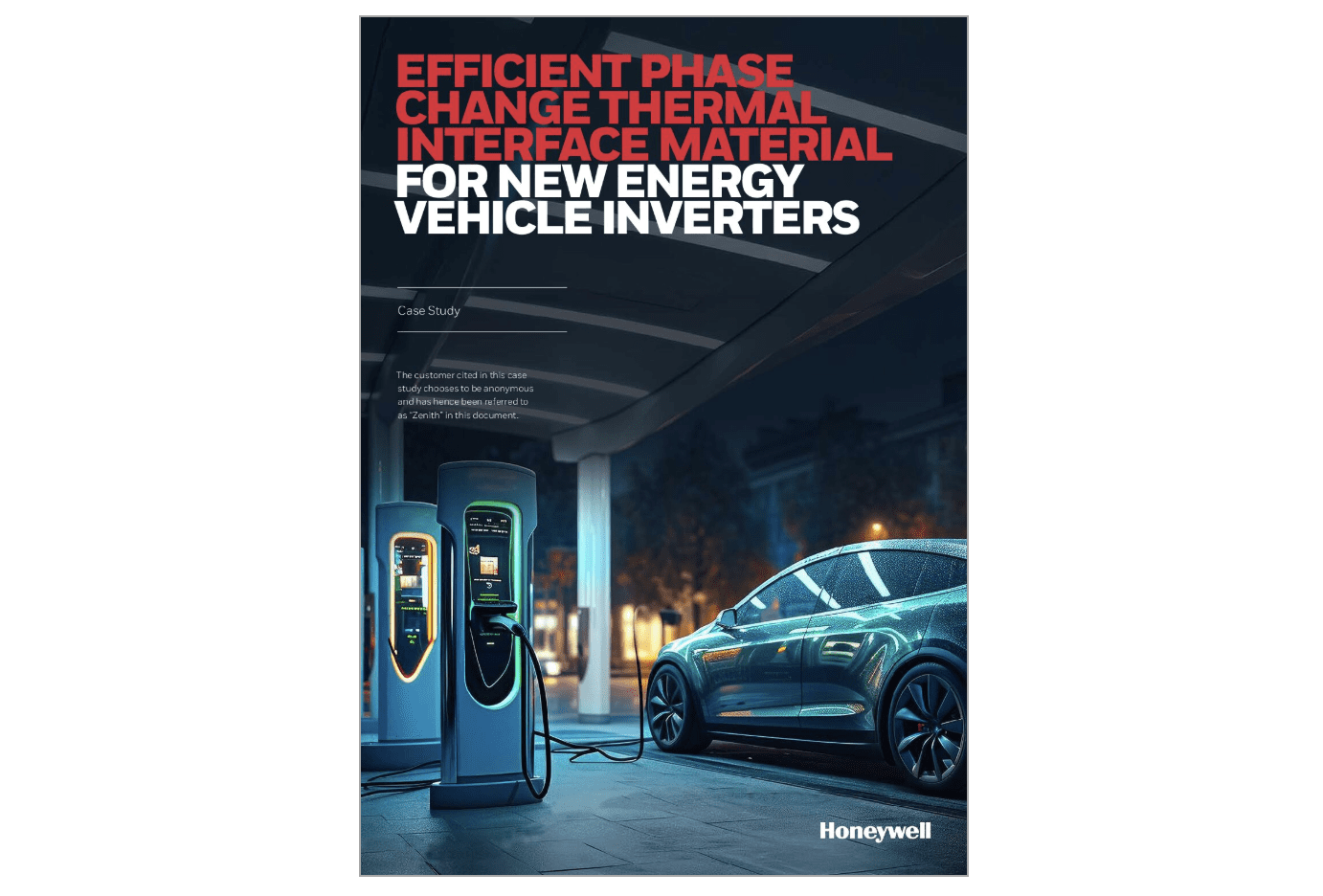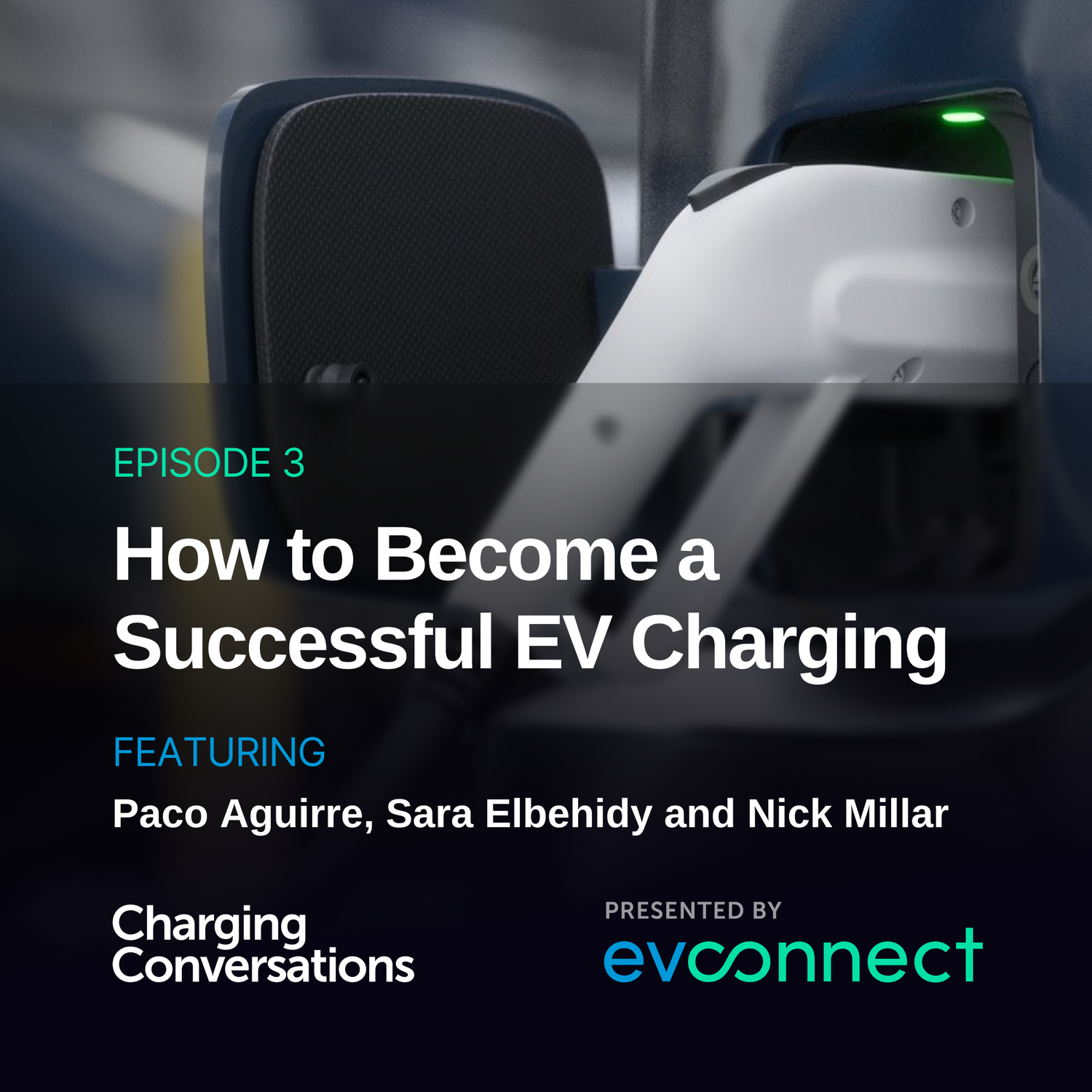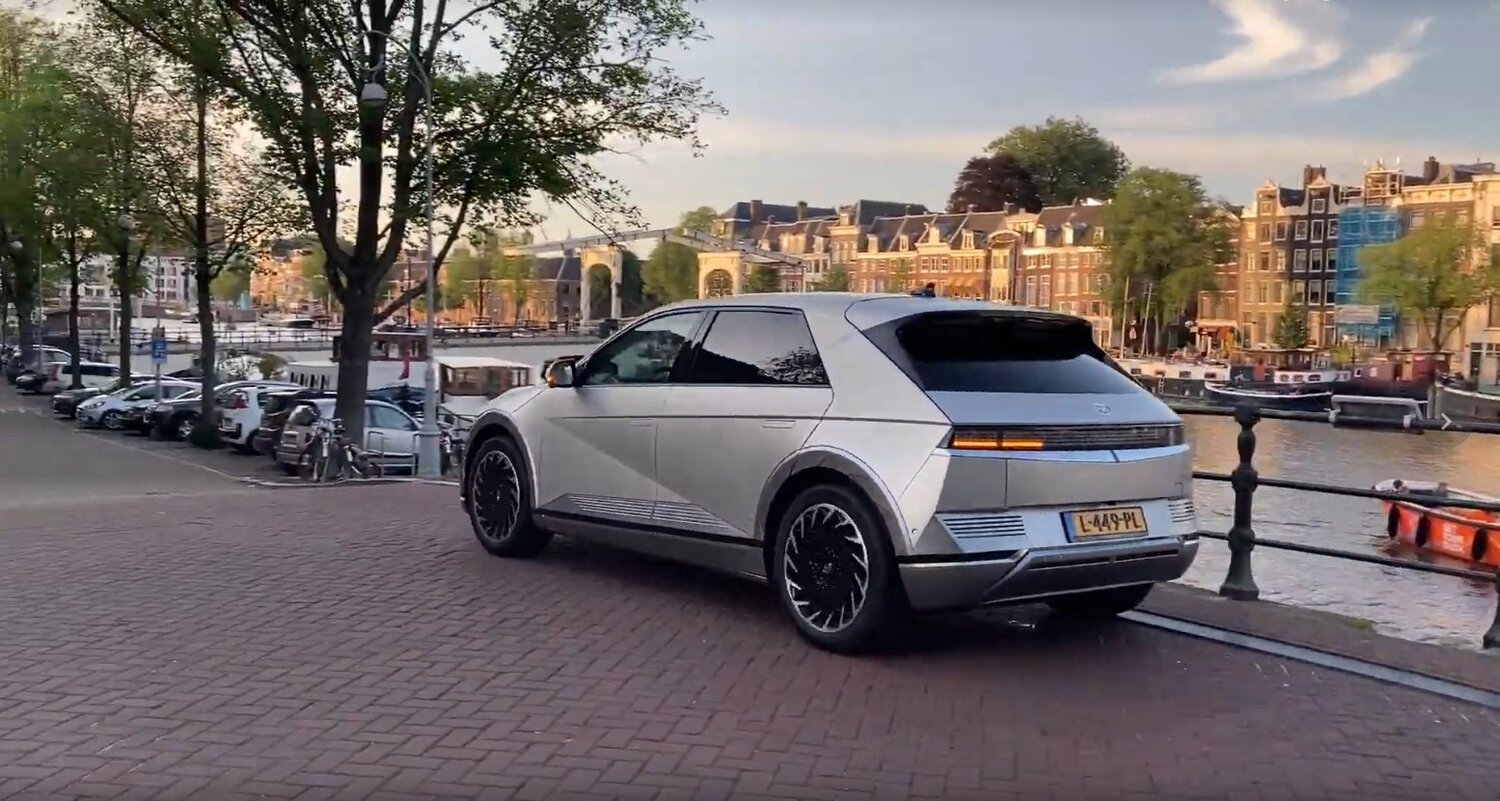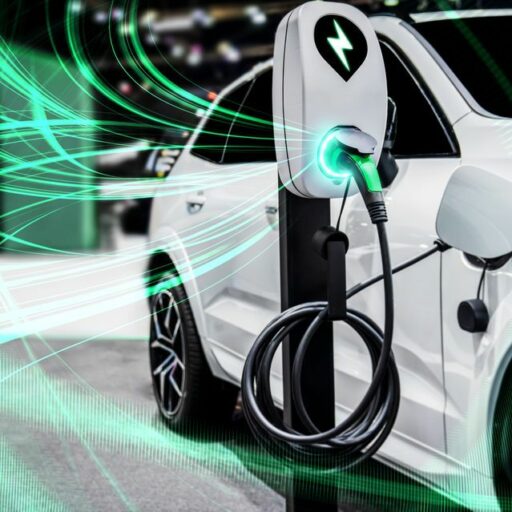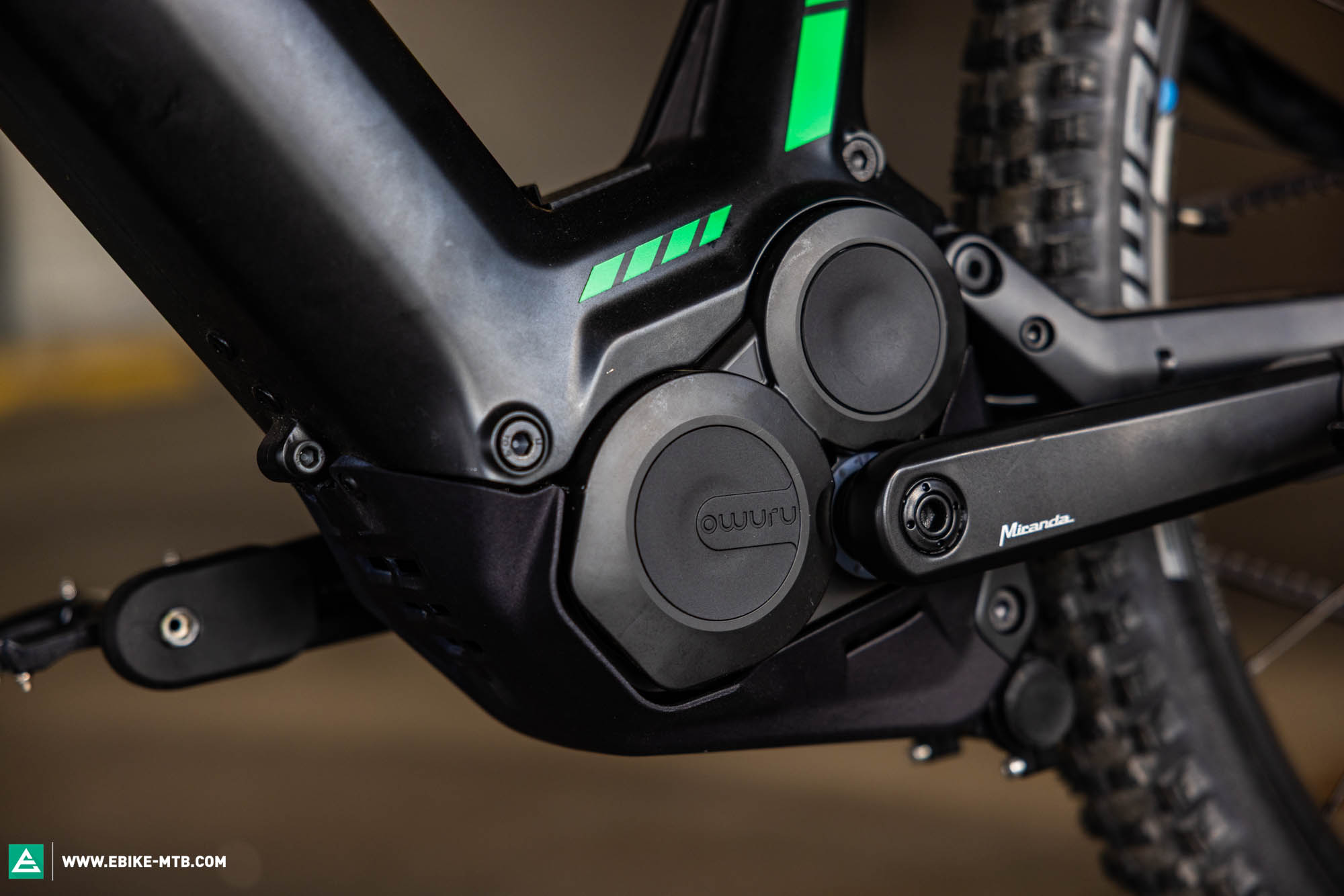
Just in time for Eurobike 2025, Owuru are unveiling the next evolution of their motor system: a fully-automatic, stepless gearbox designed for e-mountainbikes. The new setup promises not only comfort and convenience, but also serious power, ranging from 90 to 150 Nm of torque, 1,000 W peak output and an impressive gear range of 500%.
The concept itself isn’t new. We first saw the Owuru gearbox in 2023, fitted to the Decathlon BTWIN LD 920 E Automatic, which was tested by our sister magazine Downtown mag. Decathlon were the first to adopt the system – and went one step further by bringing Owuru in-house as a subsidiary. Now, Owuru are stepping things up for proper eMTB use with a more powerful version of the unit. As before, the derailleur is gone, with the shifting mechanism integrated directly into the motor, but this latest iteration brings significantly more power and torque. We’ve already had the chance to test the Owuru gearbox unit for you – here’s what we found.
The Owuru gearbox unit in detail
Instead of traditional gears, the new Owuru gearbox uses a stepless transmission system – a CVT, or continuously variable transmission. Unlike conventional drivetrains with fixed gear steps, this system constantly and automatically adjusts the gear ratio. The result? Seamless transitions across a 500% gear range that make it feel like you’ve got an infinite number of gears at your disposal.
Here’s where it gets a bit more technical. At the heart of the 48 V motor system is a planetary gearbox that combines your pedalling input with the power of the motor – or rather, motors. That’s right: the Owuru gearbox uses two brushless electric motors. One controls the internal gear ratio, essentially how easy or hard it feels to pedal. The other regulates the support level, determining how much extra power the system delivers. Both motors feed into the same crank axle, which connects to your chainring and transfers the power to the rear wheel.
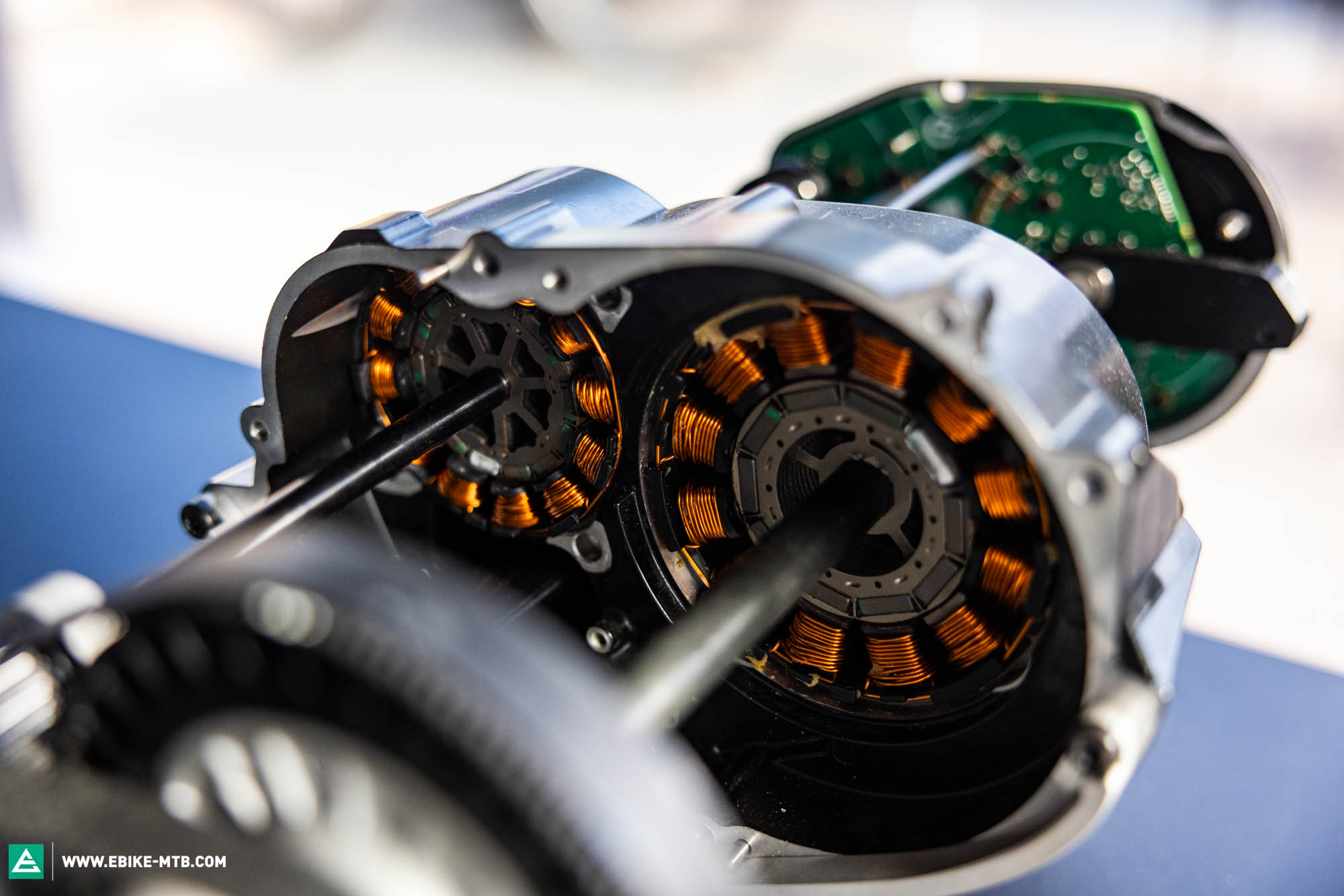
Power is transmitted inside the gearbox unit via two special synchronised belts, which are designed to operate with minimal noise.
The cadence control, called “Cadence Setting Control,” lets you set your target cadence via the handlebar remote. The gearbox then takes your preferred pedalling rate and the selected support level and automatically adjusts the gear ratio and motor output to match. And it does so with such speed and precision that you always feel perfectly connected to the pedals – as if they’re glued to your feet.
Is the Owuru gearbox unit what we always hoped Pinion would build for eMTBs? – differences and weight comparison
At 3.9 kg, the Owuru gearbox unit is around 200 g lighter than the Pinion MGU E1.12, despite packing two electric motors. Compared to a conventional mid-drive motor like the Bosch Performance Line CX Gen5, which weighs around 2.8 kg, the Owuru unit adds about 1.1 kg. But that difference quickly evens out when you look at what it replaces.
By ditching the cassette (approx. 450 g), chain (approx. 280 g), shifter (approx. 100 g) and mechanical derailleur (approx. 280 g), you save roughly 1.1 kg, which puts the total system weight on par with a standard mid-drive setup including drivetrain. If you’re running an electronic drivetrain like the SRAM GX Eagle AXS Transmission with derailleur, controller and battery coming in at around 1.3 kg the Owuru gearbox unit actually ends up being about 200 g lighter.
The advantage of an integrated gearbox: with the chain, cassette and rear derailleur out of the picture, you’re reducing both unsprung and rotating mass at the rear wheel. In other words, there’s less weight being jolted around with every hit. At the same time, the drivetrain weight sits lower and more centrally around the bottom bracket, which improves handling and gives you better control out on the trail.
Compared to the Pinion MGU, the current benchmark in integrated motor-gearbox systems, Owuru are taking a different approach. While Pinion use a sequential 12-speed gearbox with fixed gear steps, Owuru’s stepless CVT system eliminates gear jumps altogether. The gearbox continuously adjusts the ratio on the fly, resulting in a much smoother, more intuitive ride. Bottom line? Our first ride left us seriously impressed – it felt like a whole new kind of ride. Verdict? Definitely next level.
| Owuru Gearbox Unit | Pinion MGU E1.12 | |
|---|---|---|
| Shifting type | CVT, stepless & automatic | Sequential |
| Gear range | 500% | 600% |
| Torque | 90–150 Nm | 85 Nm |
| Peak power | 1,000 W | 600 W |
| Weight | approx. 3.9 kg | approx. 4.1 kg |
Owuru – the leopard from Belgium
The name “Owuru” comes from Igbo, a West African language spoken in Nigeria. It means leopard, a symbol of agility and adaptability two traits the Belgian company aims to embody with its gearbox unit. Founded in 2020, Owuru is now a subsidiary of Decathlon, headquartered in Belgium, with production based in Decathlon’s own factory in Lille, France. So far, the motor system has only been used in the BTWIN LD 920 E Automatic, but the new gearbox is set to become available to other OEMs as well. Its market launch is currently planned for 2028.
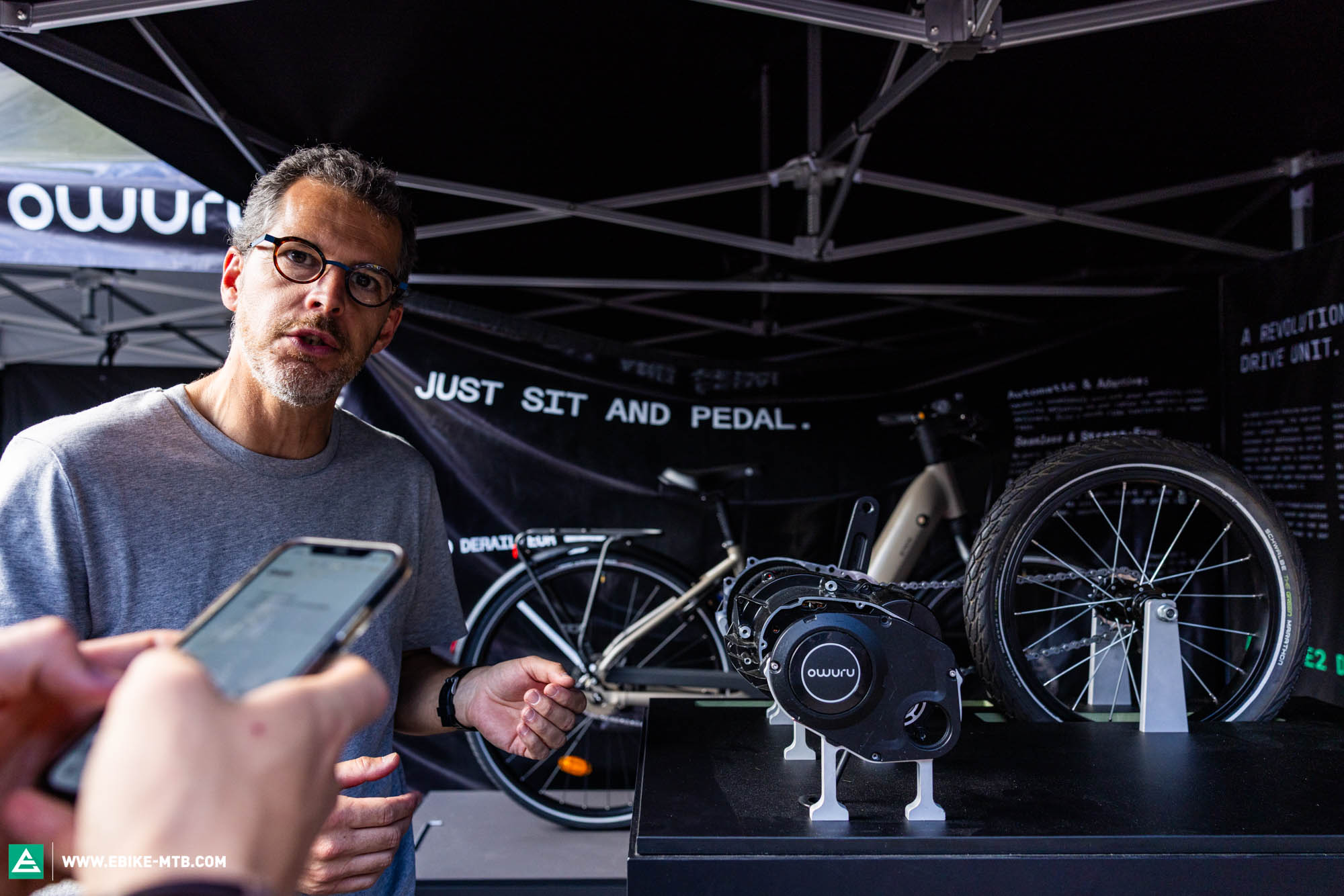
Owuru currently supply only the drive unit. The display, remote, battery and all other components are expected to be developed in collaboration with the bike manufacturer. This allows the company to focus entirely on motor development without being tied to its own closed ecosystem. While this approach offers maximum flexibility, it also means there’s no complete system like you get from Bosch, TQ or FAZUA.
For eMTBs in particular, that’s a serious challenge. Demands on user interface, ergonomics and display design are high especially when compared to the polished, all-in-one systems offered by established manufacturers.
For the Owuru concept to succeed, a strong partnership with an OEM is essential, one that not only builds frames, but also has the capability to develop a fully integrated, competitive system. Without that kind of collaboration, the drivetrain may be technically impressive, but it won’t be ready for the market.
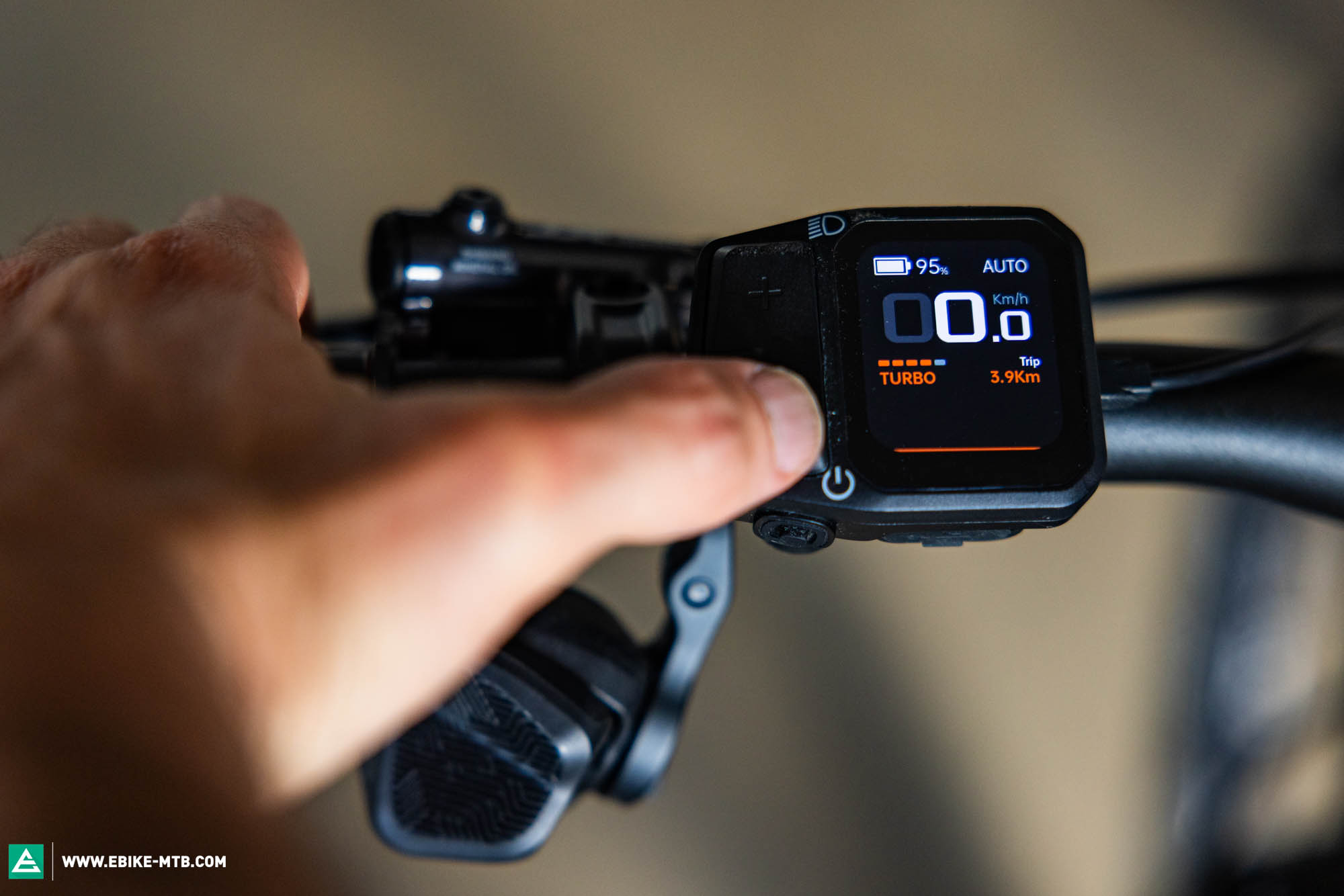
How does the Owuru gearbox unit perform in its first test ride?
We had the chance to take the Owuru gearbox unit out for a short test ride. The prototype we rode was built around a frame developed by CERO Design, the studio behind UNNO Bikes and the work of Cesar Rojo. This particular frame won’t be going into production, but it served as a solid test platform for the new drive system.
The biggest wow moment comes right at the start: no trigger, no gears. If you’re coming from a conventional bike, you’ll likely catch yourself instinctively reaching for a shifter, just like drivers who switch from manual to automatic and still try to press a clutch pedal. But once you get the hang of the Cadence Setting Control, everything falls into place. You simply set your preferred cadence, and the system takes care of the rest. And it does so impressively well. The gearbox adjusts the gearing and motor support so seamlessly and quickly that you can keep pushing at full power with zero interruption. The result is a super smooth and fluid riding experience. As for noise, the unit is pleasantly quiet. You can hear it working, but it’s no louder than, say, the motor hum from a Bosch Performance Line CX Gen5.
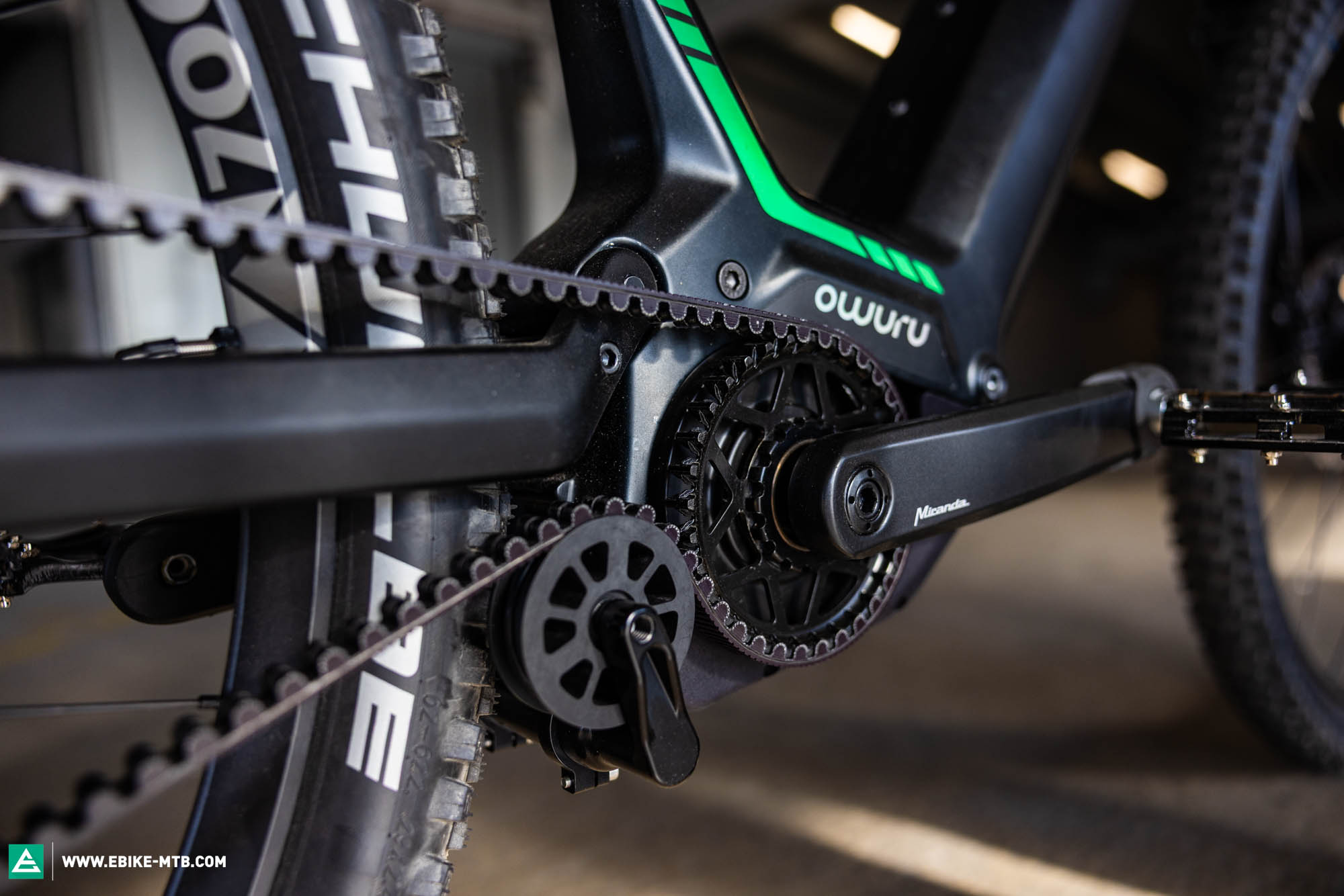
Two things still stand out: there’s currently a noticeable amount of play when starting to pedal typical for gearbox systems but Owuru are already working on it. The overrun, meaning the slight push from the motor after you stop pedalling, is barely there for now. However, that’s something that can be fine-tuned via software and easily customised by OEMs if needed.
All in all, we came away genuinely impressed with our first ride. The integration, the smooth ride feel, and the quiet operation of the drivetrain are unlike anything we’ve experienced before. But no matter how impressive the tech may be, without a strong ecosystem, even the most advanced motor won’t get far. Whether Owuru can take that next step together with a capable OEM will be key to their success– both on the trail and in the market.
Conclusions about the Owuru gearbox
The Owuru gearbox unit impressed us with an exceptionally smooth ride feel, stepless automatic shifting and powerful motor. In terms of ride experience, we actually preferred it over the Pinion MGU E1.12 in our first test. But for now, it remains a gearbox without an ecosystem. No display, no remote, no app– and more importantly, no production launch before 2028. A real shame, because the potential here is huge. For a technology that already feels this advanced, that’s a painfully long wait. Let’s hope some OEMs are bold enough to take the leap, because in terms of ride performance, the gearbox unit has already managed to surprise us in all the right ways.
Words: Benedikt Schmidt Photos: Benedikt Schmidt, Robin Schmitt

